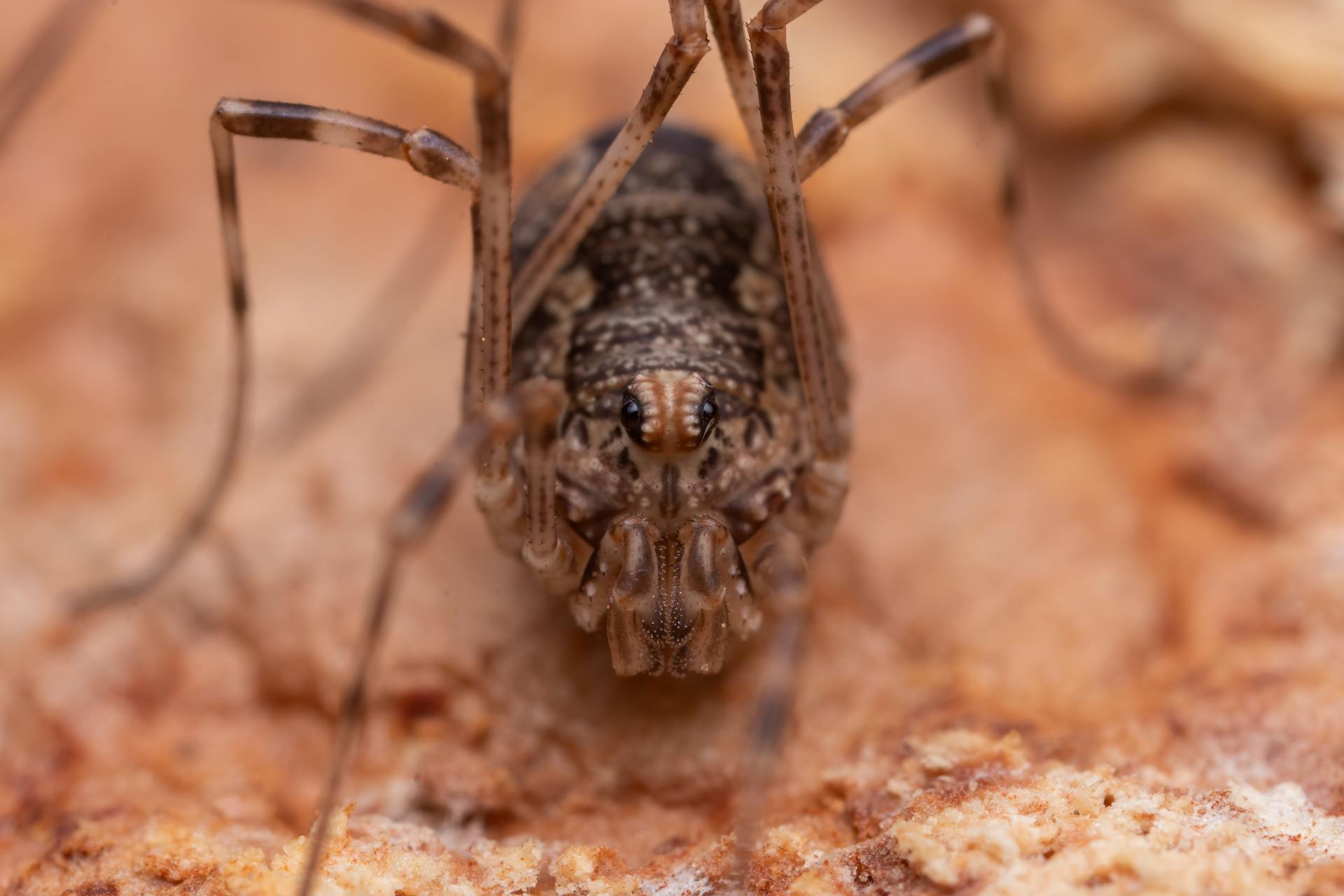
Hookworms are a type of parasitic worm that can infect dogs, and humans can catch them from their furry friends.
Humans can catch hookworms through contact with contaminated feces, soil, or contaminated water. Hookworm larvae can penetrate the skin, usually through cuts or scratches.
Hookworm infections in humans are relatively rare in the US, but more common in tropical and subtropical regions.
Hookworm
Hookworms are a type of parasitic worm that can infect humans through contact with contaminated soil or feces.
They are most commonly found in areas with poor sanitation and hygiene, where dogs are often present.
Hookworm larvae can penetrate the skin of humans through minor cuts or scratches.
In fact, a single hookworm larva can infect a human through a single scratch.
Hookworms can also be transmitted through contact with contaminated soil, which can happen when walking barefoot in areas where dogs have defecated.
The good news is that hookworm infections are relatively rare in developed countries.
However, in areas where sanitation is poor, hookworm infections can be a significant public health concern.
Hookworms can cause a range of symptoms, including diarrhea, abdominal pain, and weight loss.
In severe cases, hookworm infections can even lead to anemia and malnutrition.
How It Spreads
Hookworms can spread through contact with contaminated soil or sand, which is often where the parasites' larvae are released.
Hookworm larvae can be present in soil or sand where animals infected with hookworm have passed their eggs.
If you step on or sit in this contaminated soil with your bare skin, the hookworm larvae can latch onto you and begin to burrow into your skin.
Here's a breakdown of the steps involved in hookworm transmission:
- Animals infected with hookworm pass the parasites' eggs out of their body in their feces.
- The eggs mature and hatch, releasing young hookworms, or larvae, into the soil or sand.
- Hookworm larvae can latch onto you and begin to burrow into your skin when you come into contact with contaminated soil or sand.
Signs and Symptoms
If you suspect you've caught hookworms from your dog, there are some telltale signs to look out for. Severe itching can be one of the first symptoms, as the larvae burrow into your skin.
Raised red lines on skin, also called tracks, are another common sign. These lines can be a giveaway that you've got a hookworm infestation.
If you notice any of these symptoms, it's essential to take action. The good news is that these symptoms will go away after several weeks as the parasite dies.
Roundworm
Roundworms can live in your dog's intestines and eat the food that hasn't been fully digested, leading to malnourishment in some dogs.
Humans can get roundworms from dogs by consuming the worms' eggs, which an infected pup can pass through his poop.
You can become infected with roundworms from contaminated environments like parks, sandboxes, playgrounds, and gardens.
Roundworm infections can manifest in two diseases: visceral larva migrans (VLM) and ocular larva migrans (OLM).
VLM can cause serious complications, including fever, coughing, belly pain, an enlarged liver, weight loss, and headaches, and it can be fatal, mainly affecting children.
OLM symptoms include abnormal eye movement, detachment of the retina, uveitis, and blindness.
A different take: Can Humans Catch Roundworms from Dogs
Symptoms
Symptoms can be a real nuisance, and it's essential to know what to look out for. Severe itching is a common symptom of hookworms, caused by the larvae burrowing into the skin.
Raised red lines on the skin, also called tracks, can be a sign of a hookworm infestation. These symptoms will usually go away after several weeks as the parasite dies.

If you suspect your dog has hookworms, look out for anemia, a condition that can lead to pale gums. Weakness and weight loss are also common symptoms.
Bloody diarrhea and itchy paws are other signs of hookworms in dogs. Poor growth can also be a sign of an underlying infection.
Here are some common symptoms of hookworms in dogs:
- Anemia
- Pale gums
- Weakness
- Weight loss
- Bloody diarrhea
- Itchy paws
- Poor growth
Risk Factors
You can get hookworms from dogs, but it's not a straightforward process. The larvae of the hookworm can infect humans through contact with contaminated soil or sand.
If you've traveled to tropical regions, you're more likely to get zoonotic hookworm, a type of hookworm that can infect humans. This is because the larvae can survive in the soil in these regions.
Walking barefoot in soil or sand in areas where dogs and cats live can increase your risk of getting hookworms. In the United States, hookworms are more common on the East Coast than the West Coast.
Here are some high-risk areas where you might encounter hookworms:
- Tropical regions where dogs and cats live
- Areas with sandy or soil environments
- Beaches, especially in tropical or subtropical climates
To minimize your risk, wear shoes and avoid skin contact with contaminated soil or sand. If you do get infected, it can cause symptoms like diarrhea and abdominal pain.
Diagnosis and Treatment
Diagnosis of a zoonotic hookworm infection, also known as cutaneous larva migrans (CLM), typically starts with a visit to your healthcare provider. They will examine your skin for itchy, red tracks made by hookworms, usually on the legs or feet.
Your provider may ask about recent travel to help provide an accurate diagnosis, as there is no blood test for zoonotic hookworm infection.
Most people with a zoonotic hookworm infection can recover on their own in 5-6 weeks, as the parasites that cause CLM die. However, in some cases, a healthcare provider might prescribe antiparasitic drugs to help kill hookworms or antibiotics to treat any bacterial infections in the damaged skin.
Here are some possible treatment options:
- Antiparasitic drugs to help kill hookworms
- Antibiotics to help treat any bacterial infections in the damaged skin
Clinical Disease
Hookworm disease in dogs can be a serious issue, and understanding its clinical forms is crucial for effective treatment. Peracute hookworm disease is life-threatening and usually affects newborn puppies infected by transmammary transmission.
Dramatic anemia is a hallmark of peracute disease, and because the worms are not yet patent, eggs won't be detected by fecal flotation. Deworming severely anemic puppies and providing supportive care, including transfusions, is essential.
Acute hookworm disease is observed in slightly older puppies, and although they'll be anemic, the anemia is not as dramatic as that of peracute disease. If left untreated, acute disease can also be life-threatening.
Adult dogs are more resistant than puppies to hookworm infection, and some may appear clinically normal but still be infected. This is known as compensated hookworm disease.
Compensated disease can develop into decompensated disease, which shows signs consistent with hookworm disease, such as anemia. Decompensation is typically secondary to a chronic disease, like cancer.
Here are the four forms of hookworm disease in dogs:
Diagnosing Hookworm
Diagnosing hookworm involves a physical examination and medical history. Your healthcare provider will look for itchy, red tracks made by hookworms on your skin, usually on the legs or feet.
There is no blood test for zoonotic hookworm infection.
If your vet suspects that your dog has hookworm, they'll perform a fecal float to look for hookworm eggs. This test is generally reliable for detecting hookworms, as the parasite produces large numbers of eggs daily.
The fecal float test may be less reliable in very young puppies, as it takes two-to-three weeks for the larvae to mature and produce eggs.
Related reading: Human Pregnancy Test
Treating Hookworm
Most people with a zoonotic hookworm infection recover without medical treatment in 5 – 6 weeks, as the parasites that cause CLM die.
If treatment is necessary, a healthcare provider might prescribe antiparasitic drugs to help kill hookworms.
Antibiotics may also be prescribed to help treat any bacterial infections in the damaged skin.
In dogs, treating hookworms requires a veterinarian's intervention, who can prescribe a dewormer or anthelmintic.
These drugs are usually oral and come with few side effects, but they only kill the adult hookworms.
A second treatment is often recommended in two-to-four weeks to eliminate any new adults that formed from the surviving larvae.
In rare cases, a small dog or puppy might require a blood transfusion to help combat severe anemia caused by excessive blood loss from the hookworms.
Zoonotic Potential
Humans can catch hookworms from dogs, but it's not the adult worms that pass from dogs to humans, it's the larvae.
Hookworm larvae can infect humans through bare skin contact with contaminated soil or sand that has dog or cat feces. This is why it's essential to practice good hygiene when playing or working outdoors.
The most common way to get hookworms is through skin contact, not by eating infected fleas or feces. However, if you accidentally swallow a flea infected with the parasite, you can get tapeworms.
There are two types of hookworms that can infect humans: A. braziliense and A. caninum. A. braziliense causes cutaneous larva migrans, also known as "creeping eruption", which results in red serpiginous tracks that are extremely itchy.
A. caninum infection causes more focal punctate skin lesions instead of persistent tracks. Infection by ingestion of A. caninum worms can also cause eosinophilic enteritis.
To prevent hookworm infections, it's crucial to regularly deworm dogs before the worms become adults. If the worms don't make it to the adult stage, they cannot produce eggs.
Here are some essential steps to prevent hookworms from passing from dogs to humans:
- Practice good personal hygiene, especially after coming into contact with contaminated soil or sand.
- Wash your hands thoroughly with soap and water.
- Keep your environment clean by promptly picking up and disposing of feces from your dog.
- Preventatives, flea medication, and dewormers are essential for keeping your dog from getting a parasite in the first place.
By following these simple steps, you can significantly reduce the risk of hookworm infections from your dog.
Sources
- https://www.mallardcreekvet.com/dr-waldens-blog/hookworms
- https://www.cdc.gov/zoonotic-hookworm/about/index.html
- https://todaysveterinarypractice.com/parasitology/hookworms-in-dogs/
- https://www.akc.org/expert-advice/health/understanding-hookworms-in-dogs/
- https://www.thedodo.com/dodowell/can-humans-get-parasites-from-dogs
Featured Images: pexels.com


